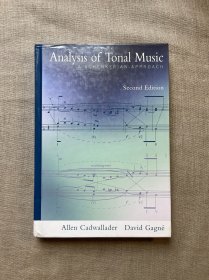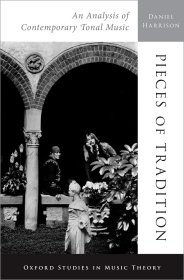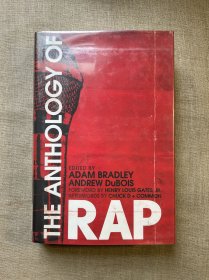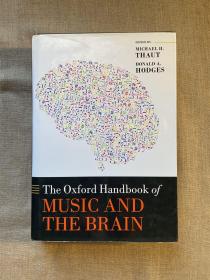
Analysis of Tonal Music: A Schenkerian Approach, 2nd Edition 调性音乐分析 : 申克方法 第二版 艾伦·卡德瓦拉德 & 大卫·加涅【牛津大学出版社精装本,英文版无酸纸印刷】打包后超一公斤重
尺寸:26.2cm × 18.7cm
¥ 420 九品
仅1件
作者Allen Cadwallader & David Gagné Gagne
出版社Oxford University Press
ISBN9780195301762
出版时间2007
版次2
装帧精装
页数416页
上书时间2024-11-20
- 在售商品 暂无
- 平均发货时间 9小时
- 好评率 暂无
- 最新上架
商品详情
- 品相描述:九品
-
无写划,页边少许压痕,页边以及最前与最后两页有些自然老化黄斑。如有明显瑕疵,已尽可能反映在照片中,详情请仔细查看照片。
所有在售图书,出版社、出版年份、页数、装订形式等信息可能存在误差(部分条目直接套用孔夫子提供的书库信息,部分条目套用亚马逊等网站的图书数据),具体事实以照片展示为准。除照片明确展示以外,默认不含纸质图书以外的任何配件(包括但不限于光盘、网络资源等)。
- 商品描述
-
Designed as an introductory text for upper-level undergraduates and beginning graduate students, Analysis of Tonal Music: A Schenkerian Approach, Second Edition, explains the fundamental principles of Schenkerian analysis by focusing on the music itself. Intended for use in one- or two-semester courses on Schenkerian theory, this text will also appeal to individuals interested in Schenker's work. The book assumes no prior knowledge of the subject, but it does require a background in harmony and voice leading; a familiarity with species counterpoint is also desirable. The authors develop Schenkerian techniques through the practical analysis of specific compositions, an approach that parallels the evolution of Schenker's work. The book explains structural principles in actual composition rather than through models and formulas, and teaches students how to think about and critically examine compositions in ways that will inform their understanding and performance of great compositions of Western art music.
The first part of the volume provides the foundation for the analysis of complete pieces and includes discussions of melody, counterpoint, bass-line structures, the Imaginary Continuo, linear techniques, and the essential properties of the Ursatz and its elaborations; the presentation of complete compositions in Part II is organized by formal category. The revised concluding chapter summarizes many of the general tonal patterns that recur throughout the literature. The book includes more than 200 analytical graphs, musical examples--some new to this edition--and a bibliography. Analysis of Tonal Music: A Schenkerian Approach, Second Edition, provides a comprehensive introduction to Schenker's ideas and demonstrates how they can be applied toward a better understanding of tonal music.
Features of the Second Edition
* NEW: An accompanying Student Workbook containing thirty-four exercises with guided analyses
* Adds a primer on graphic notation (as an appendix)
* Places greater emphasis on the Imaginary Continuo as a tool for analysis
* Introduces interruption technique earlier and in more depth
* Provides new examples in Chapter 9 that demonstrate the common middleground plans underlying Baroque binary movements
* Delves more deeply into rhythmic principles
* Features a completely revised Chapter 12, which now presents common tonal patterns (structural "paradigms")
* Includes suggestions for further analysis at chapter ends and refers students to appropriate workbook exercises
Allen Cadwallader is Professor Music Theory at Oberlin Conservatory of Music.
David Gagné is Associate Professor at Queens College, CUNY.
相关推荐
-

Techniques and Materials of Tonal Music
八五品苏州
¥ 200.00
-

Pieces of Tradition: An Analysis of Contemporary Tonal Music,当代调性音乐分析,英文原版
九五品西安
¥ 573.00
-

Tonal Harmony
八五品北京
¥ 288.00
-

TONAL MUSIC
七五品菏泽
¥ 225.00
-

Tonal Value Atlas
八五品上海
¥ 1099.00
-

Analysis of Microdata
九五品周口
¥ 310.00
-

ANALYSIS OF VARIANCE
八五品天津
¥ 200.00
-

TEXTBOOK OF POLLEN ANALYSIS
八品北京
¥ 500.00
-

Principles of Program Analysis
八五品北京
¥ 165.00
-

the age of analysis
八五品广州
¥ 60.00
— 没有更多了 —






















以下为对购买帮助不大的评价